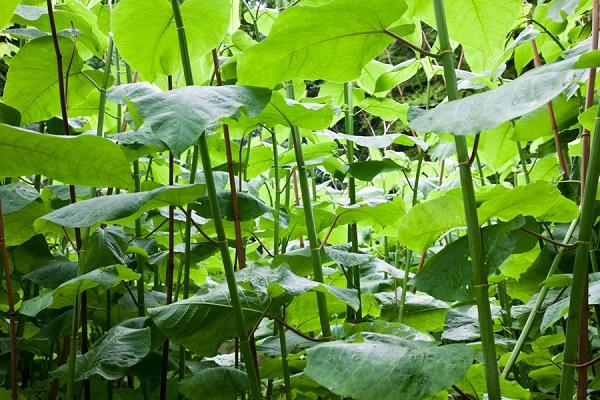How do you deal with Japanese Knotweed in Scotland?
We have the Victorians to thank for Knotweed - one of the world's worst invasive species. Native to Eastern Asia, the plant has an aggressive root system and growth that’s been known to damage concrete foundations, roads, retaining walls and even flood defences.Japanese Knotweed’s root system can extend up to three metres deep and seven metres out from the parent plant, growing through cracks and gaps in and around concrete finishes and floors. Worse still, the plant can stay dormant for twenty years until you turn up for a job and ‘wake it up’.
Although managing the weed is the responsibility of the owner/occupier of a site who has a legal obligation not to allow it to spread, knowing what to do when you encounter it on site will ensure your work does not stall for long. So if Japanese Knotweed is found on your site:
Cordon off the area where the Knotweed is situated immediately to prevent machinery/foot traffic from accidentally spreading the material across the site.
Seek specialist guidance and refer to the Environment Agencies code of practice for dealing with Japanese Knotweed on development sites.
Obtain a copy of the Japanese Knotweed Management plan and follow its instructions
If herbicide treatment is to be carried out, ensure the chosen contractor is a competent and qualified person with appropriate National Proficiency Test Council (NPTC) certification.
Japanese knotweed is classed as 'controlled waste' under the Environmental Protection Act 1990. Any soil or Knotweed taken off-site requires disposal only at licensed landfill sites.
There is no insurance under the contamination cover of the LABC Warranty policy for Japanese Knotweed as it is not a notifiable contaminant. But some companies specialising in the weed’s management on development sites offer insurance-backed guarantees for its eradication.
Be careful about any products and methods that claim to quickly eradicate the weed. You don’t want your good work to be undone by someone else’s ‘quick fix’.
See also:
Scottish Rural Development Programme - control of invasive non-native species
For further technical articles and advice visit www.labcwarranty.co.uk/technical

Comments
Add new comment